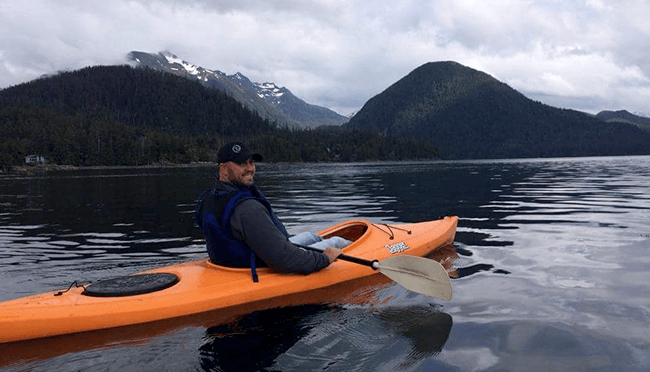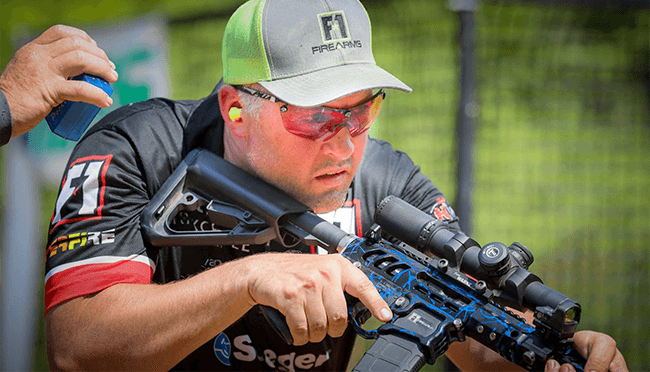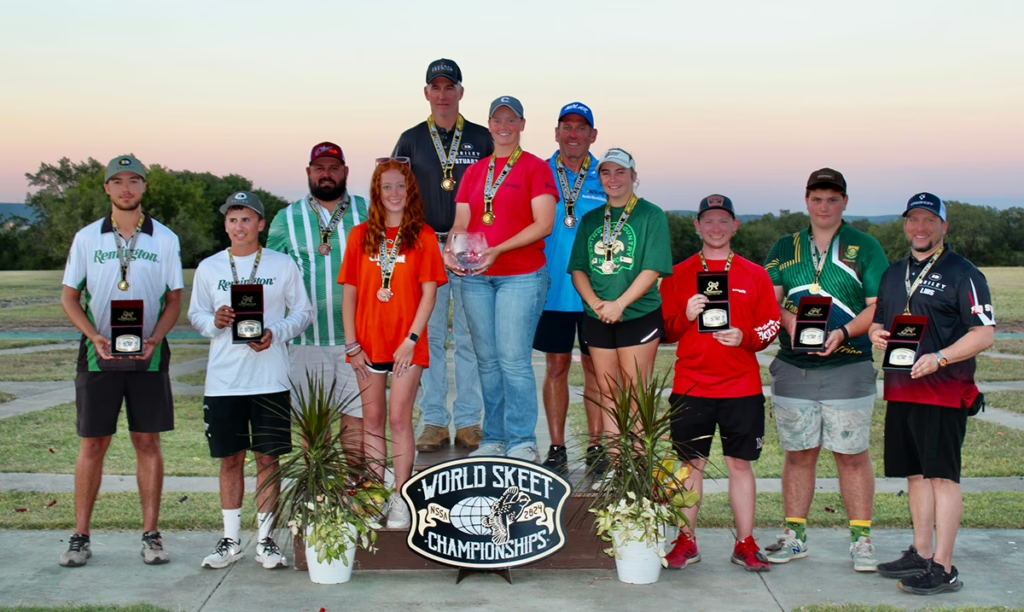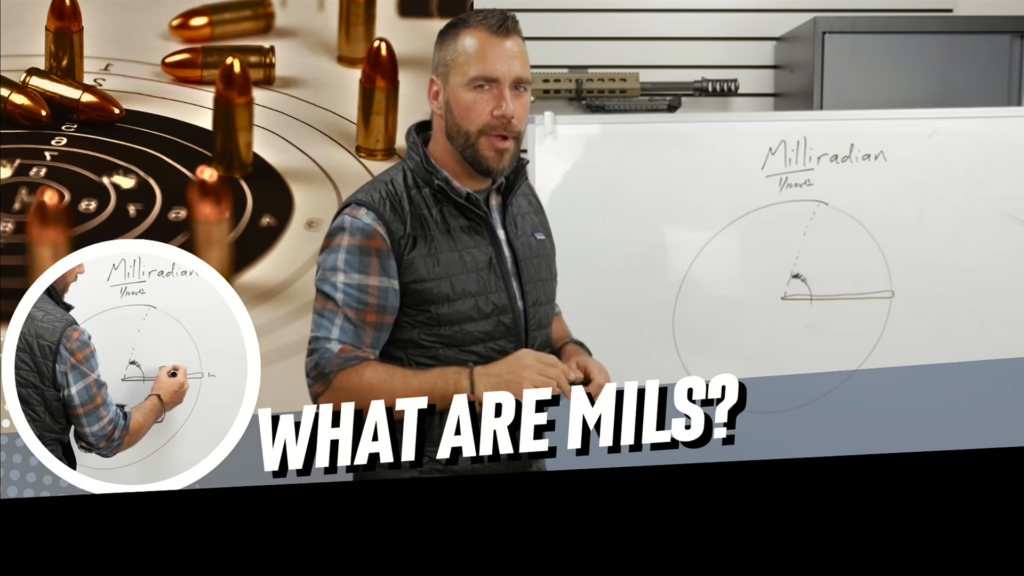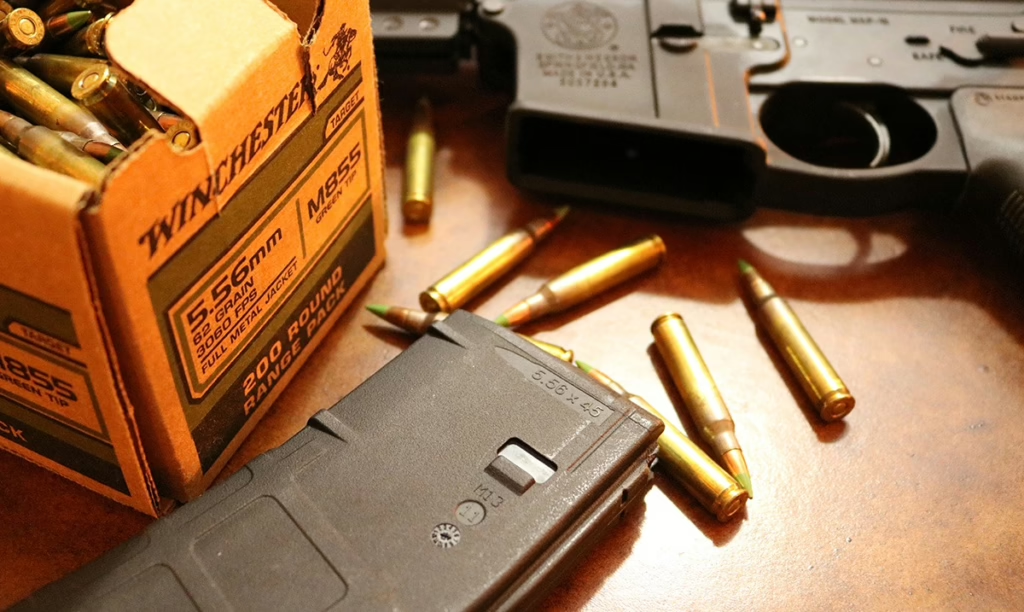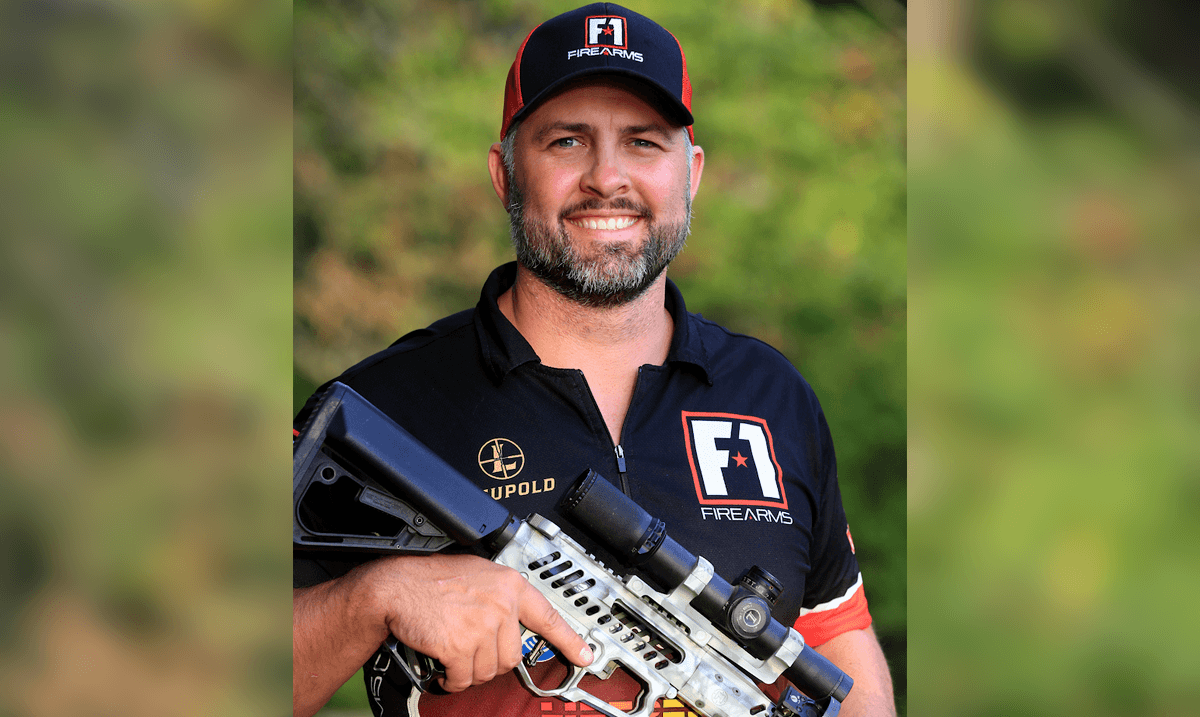
By Warren Berg
At first blush, I found Ryan Muller something of an enigma. Here’s a guy who’s a self-proclaimed “country boy” who says he is “at home wearing a cut-off shirt and overalls,” yet has degrees in chemistry and plastics engineering and worked on the Airbus A320 program before changing careers and becoming a full-time 3-Gun competitor.
His father taught him how to shoot, but it was his wife, Dianna, who taught him how to compete. (We introduced you last month to Dianna.) Now, the husband-and-wife duo are full-time top competitors on the 3-Gun circuit.
“I grew up in the Midwest on a farm, and shooting was a part of life,” says Muller, explaining that his father taught him the ins and out of firearms safety and how, like all boys in his family, he was presented with his first rifle, a Ruger 10/22, at age 13. “From there I took shooting into hunting, and from there I took it into competitive shooting after meeting Dianna. From there, it just kind of morphed into ‘this is what we do,’ and firearms is basically our entire livelihood now.”
Date of a Lifetime
That metamorphosis wasn’t exactly an overnight event.
“I started helping Dianna with shooting some sporting clays, because that is where she was suffering,” explains Muller of how he and Dianna started shooting together as a couple. “From there, we went to the range just for fun like any couple may do … and she decided ‘Hey, you’re pretty good at this. You should become a competitor,’ so I signed up for a match.”
His first match was in 3-Gun, and Dianna insisted he shoot before she did, which naturally added to the pressure. And though versed in the fundamentals of firearms safety, Muller tells me there was some range etiquette he needed to pick up along the way.
“We grew up on a farm and shot in a field out of the backs of trucks,” he says of what constituted a range in his youth. “There was no 180, there was no staging area, there was no cold range. It was just basic safety, so I had a lot of range etiquette to learn, and she helped teach me that.”
The two progressed in their shooting as they grew in their relationship. Dianna was nearing the end of a career in law enforcement and, while being an engineer at an aerospace company was a good job, Muller says it wasn’t necessarily something he wanted to do forever. Working at a computer just didn’t appeal to his outdoors mindset.
3-Gun’s Unpredictability is Where the Excitement is
Eventually, the two left their careers and started new ones as 3-Gun competitors.
Not surprisingly, the 3-Gun matches Dianna introduced him to is Muller’s favorite shooting sport. He likes the unpredictability of target combinations that can be presented, and how some stages require all three guns and lots of ammunition, while others require only one gun and a few rounds.
“You just never know, and you can also go to different matches around the country that have different flavors,” he says, noting that if he has a match in the Rocky or Blue Ridge Mountains, he knows they will be physically intense and have a high round count, while a small local match will likely have stages that are shorter and faster.
As much as Muller likes 3-Gun, he says he’d like to try organized PRS (Precision Rifle Series) competition. “I grew up hunting with a rifle, and a long shot wasn’t difficult, but I’d like to stretch my legs a little bit and see how I do in the Precision Rifle Series,” he says, explaining how he’s done the speed shooting sports, and that PRS is a different game altogether.
In this Video, Professional shooters Dianna and Ryan Muller explain one of the fastest growing shooting sports in the country right now; the action-packed multi-gun competition commonly known as “3-gun.”
Dreaming of a Minigun
When asked what his dream gun is, Muller says it’s a Dillon Aero Minigun. He laughs that the only problem is that he doesn’t have the ammunition to feed it, and adds that if he ever does get one, he wants it “mounted on something cool” like a UTV or a helicopter. “Why not? Right!” he asks.
Scores Matter, But Not More Than People
The biggest surprise Muller found in the shooting sports is that, while the sports are competitive, other shooters aren’t so much in that they are really willing to help other shooters. He says other competitors will “tell you their ideas, they will let you borrow their very expensive and well-maintained equipment, and they’re just very forthcoming with information and gear.”
That sort of friendliness generally spans all the shooting disciplines, and Muller suggests that someone who is new to firearms and interested in a specific sport should find a local event and volunteer to help.
“The match organizers will let you keep score or reset targets, and that’s going to help you learn the shooting sport itself. And then, after that, after you get kind of an understanding, you just need to go to one of them and compete with the guns you have,” he says, adding that you don’t need to start off with fancy or expensive equipment, and that you should jump right in and not worry about whether you have practiced enough or are good enough.
The Shooting Sports as Life-Changer
The shooting sports have forever changed Muller’s life. It’s his second career and, while it’s not what his marriage is based on, it’s a very important part of it.
“I went from sitting behind the computer as a nerdy engineer to traveling around the country and going to things like SHOT Show®. It’s like living a dream,” he says.
Pro Tip
When shooting competitively, Muller says it’s important to stay hydrated.
“If you’re going to a match that has a large elevation change from where you live, it’s going to take you about three days to get used to that elevation, and you’re going to have to maintain hydration. You really need to drink a lot of water. That’s going to help you get back to your normal self before the match hits, so you’re not completely exhausted.” Another tip Muller suggests is to try and eat a little bit throughout the day.
“Like 30 minutes before you get ready to shoot, you want to get some protein in, so it’s some tuna and crackers or something. You want a little food in you, and that’s going to help you maintain your mental game.”
Seven Things You Didn’t Know About Ryan Muller
1. In the sixth grade, Muller grew 5½ inches, giving him a long, lanky stature and earning him the nickname “Bert” from Sesame Street’s Bert and Ernie characters.
2. Muller worked as an engineer in the transparency division of an aerospace company that made everything clear on an aircraft, such as wingtip lenses, landing light lenses and windows.
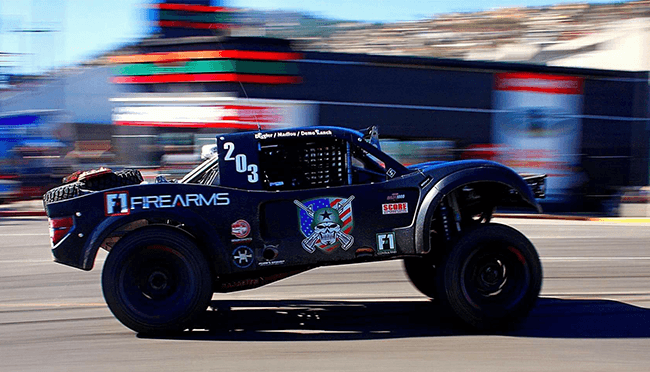
Thirty miles into the San Felipe 250, Muller flipped his truck end-over-end three and a half times. He righted the truck and finished the race.
3. Muller raced in the San Felipe 250 in an F-1 Firearms truck. He crashed after 30 miles, flipping end-over-end three and a half times. They righted the truck, replaced the alternator, un-hydrolocked the engine and finished the race.
4. His social media accounts suggest he has a glamorous public life, but in his real life, Muller is perfectly happy with something as simple as a hotdog done over a campfire in the middle of nowhere.
5. Today, Muller finds farming relaxing, but as a kid he thought it was “hot and work and terrible.”
6. Muller has a master’s degree in chemistry and engineering.
7. His favorite gun is his dad’s Remington 1100, because it was his dad’s and it was something that he says was pretty to look at.


